 |
|||||||||




 |
|||||||||





Photo: The first Airbus A320 for Atlantic Airways - delivered in December 2016 - will be deployed on routes from the Faroe Islands to Copenhagen. Image provided by & Copyright © AIRBUS S.A.S. 2016 - photo by C. BRINKMANN.
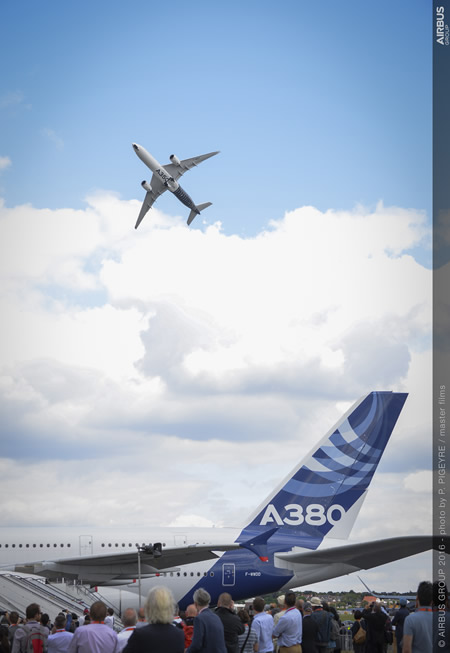
Photo: Airbus’ widebody A350 XWB and A380 were among the commercial jetliners on display - flying and static - during the Farnborough International Airshow. Image provided by & Copyright © AIRBUS GROUP 2016 - photo by P. PIGEYRE / master films.
Five student teams from Australia, China, France, Nigeria and the United Kingdom will compete in the final round of the fifth edition of Airbus’ Fly Your Ideas global challenge, organised in partnership with UNESCO. The radical concepts selected cover a wide range of innovations going from an alternative to satellite imagery, to improved aircraft taxiing, clever ways of boarding, new areas for luggage storage or offering a new business model using existing Airbus aircraft.
Representing different nationalities and universities across Africa, Europe and Asia-Pacific, the five finalist teams embody true diversity, which is a key driver of innovation and performance. The students, competing for a €30,000 prize, also demonstrate a wide variety of disciplines from Natural Sciences to Engineering and Business.
Their inventive ideas, which were selected from over 350 entries, had to answer one of five challenges identified by Airbus to provide sustainable future solutions. The innovations proposed by the five finalist teams look at alternative business models, passengers’ experience and flight operations.
The five finalist teams will soon travel to Toulouse, France, where they will spend a week at the Airbus ProtoSpace facility to prototype, test and visualise their ideas using state-of-the-art equipment with personal guidance from Airbus. At the end of their week at Airbus, the students will present their innovative projects and the newly developed prototype in front of Airbus and UNESCO experts and personalities from the aerospace and academic world. The competition offers a unique opportunity for students worldwide, working in diverse teams of 3-5 members, to develop valuable skills, including teamwork, project management, communications and presentation, and to get involved in engineering.
The ideas competing for the final prize are:
• Airborne Earth Observation - Team SkyVision
University of Surrey, UK
A radical concept that turns a commercial airliner into an ‘Earth Observation Device’ by installing equipment into the belly of the aircraft to monitor ground activity during flight. An alternative to satellite imagery, it opens up new opportunities such as ecology analysis and urban planning.
• Improving Airport Taxi Flow and Efficiency - Team Nevada
Obafemi Awolowo University, Nigeria
An airport taxiing system that uses sensors and algorithms for automated Ground Traffic Control, both in the tower and on the aircraft, to significantly improve aircraft traffic at airports and thus reduce emissions.
• Compact Luggage Strategy Mobile App - Team PassEx
Institut d’Administration des Entreprises - IAE Toulouse, France
A revolutionary boarding system that uses a real-time mobile app to assign boarding status to passengers according to their luggage size. The Compact Luggage Strategy (CLS) addresses current storage issues in over-head compartments by distributing passengers across the aircraft according to the size of their baggage.
• Private Stowage Compartment - Team DAELead
University of Hong Kong, China
A clever aircraft cabin design that locates a Private Stowage Compartment (PSC) underneath passengers’ feet, utilizing the space between the cabin floor and the cargo ceiling.
• A400M Aerial Firefighting Platform - Team Aquarius
Royal Melbourne Institute of Technology, Australia
A fire-fighting solution that incorporates modular systems using pressurized fire retardant containers fixed to fast-loadable pallets for a network of Airbus A400M aircraft, to create a system of aerial firefighting platforms that can be used for rapid wildfire suppression.
|GlobalGiants.Com|
AIRBUS Fly Your Ideas. Previous Online Coverage by “Global Giants” (December 22, 2016)
Edited & Posted by the Editor | 11:13 AM | View the original post
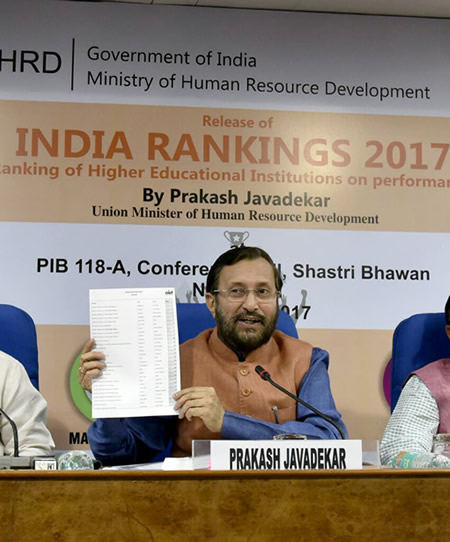
Photo: India’s Union Minister for Human Resource Development, Shri Prakash Javadekar, releasing the “INDIA RANKING 2017”, in New Delhi on April 03, 2017. Image provided by the Press Information Bureau, Government of India.
New Delhi, India. April 03, 2017. India’s Union Minister of Human Resource Development, Shri Prakash Javadekar, released the India Rankings 2017 for the Educational Institutions and dedicated it to the nation in New Delhi today.
Speaking on the occasion he said that this step is a sequel of our Government’s commitment towards bringing landmark changes in the quality of education provided to students across the country for which we are working relentlessly. Shri Javadekar said this ranking is meant to have beginning of a fair competition among the institutions for achieving excellence in their efforts.
• The Minister said now institutions, parents, students, and others will have authentic information about the ranking and quality of a particular university, college, or vocational institution and this has led to the global scaling up of our credentials.
The Minister on this occasion also announced that government will extend more help to quality education institutions. It’s a vital change of policy and will motivate all the institutions to perform and excel. Factors regarding number of research papers submitted, patents obtained and campus placement figures will also count for seeking government support. He said public perception, employer perception and academic perception will also be given importance.
A very exciting feature of this year’s Rankings is the ranking of General Degree Colleges in Arts and Sciences from across the country. While many of the names appearing in the top-100 list are well known and famous, there are many others who may not be so well known but have fared well.
OVERALL INSTITUTIONS (INCLUDING UNIVERSITIES)
Rank — Institution — City — State — Score
O Anusandhan University Bhubaneswar Odisha 46.72 UNIVERSITIES
Rank — University — City — State — Score
O Anusandhan University Bhubaneswar Odisha 46.72 COLLEGES
Rank — College — City — State — Score
• Application by a College for Autonomous Status
New Delhi, India. April 06, 2017. India’s University Grants Commission (UGC) has implemented the scheme of Autonomous Colleges with a view to bring in quality reforms in higher education. The Scheme of Autonomous Colleges offers academic and operative freedom to the Colleges. The autonomy so awarded under the scheme enables a College to determine and prescribe its own courses of study and syllabi and restructure and redesign the courses to suit local needs and to devise innovative methods of teaching, examination and evaluation.
The scheme of Autonomous Colleges is open for all Colleges. Any number of Colleges under a University can apply for award of autonomous status to UGC under this scheme. However, Colleges are granted autonomous status only when they fulfill conditions as prescribed in the guidelines of the scheme of Autonomous Colleges.
This information was given by the Minister of State (HRD), Dr. Mahendra Nath Pandey, today ( April 06, 2017), in a written reply to a question in the parliament.
|GlobalGiants.Com|
Edited & Posted by the Editor | 12:47 PM | View the original post
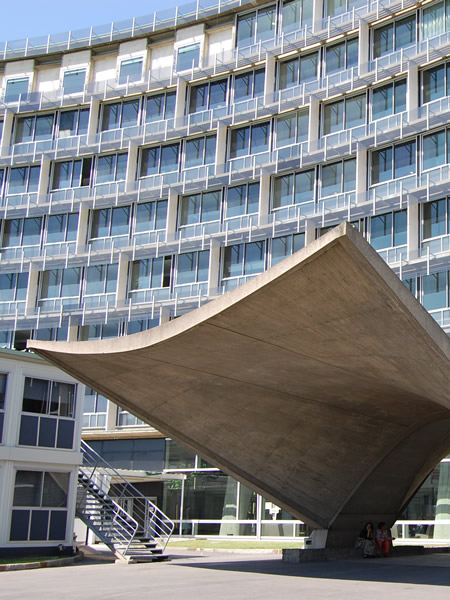
Photo: A section of UNESCO headquarters building, Paris, France. Image Credit: Anna Armstrong.
The UNESCO-based worldwide association of higher education institutions, International Association of Universities (IAU), is strengthening its Higher Education Internationalization program.
What is Internationalization of Higher Education?
Professor Hans De Wit, a noted specialist in this field and founding editor of the Journal of Studies in International Education describes it as the process of integrating international and intercultural dimensions into the purpose, functions, and delivering of post-secondary education so that its quality improves and making it a meaningful contribution to the society.
While, OECD (Organisation for Economic Co-operation and Development), defines it as the complex of processes whose combined effect, whether planned or not, is to enhance the international dimension of the experience of higher education in universities and similar educational institutions.
IAU has classified the internationalization process into five sections:
What are the academic benefits of Internationalization of Higher Education?
According to IAU, educational benefits of internationalization include:
Giorgio Marinoni, Manager of Internationalization Policy at IAU, told the editor that globalization has completely changed the environment in which Higher Education institutions around the world operate, and it is a phenomenon they cannot ignore.
IAU’s program of advisory services for advancing internationalization called ISAS (2.0), consists of several different but complementary services offered to IAU Members, other Higher Education Institutions (HEIs), individuals at HEIs, national governments, and other organizations.
IAU has, meanwhile, called upon higher education institutions pursuing internationalization to adhere to the following values:
Founded in 1950, under the auspices of UNESCO, the International Association of Universities (IAU), with headquarters at UNESCO, Paris, France, is the leading global association of higher education institutions and organizations.
Its members from India, for example, include the following among others:
International Association of Universities (IAU) chairs the editorial team of the “Internationalisation of Higher Education” handbook. This handbook, published by DUZ Academic Publishers, Berlin, Germany, is a valuable tool and source of reference for higher education institutions.
|GlobalGiants.Com|
The editor, Surender Hastir MAUA, is an Administration Consultant and an Expert in Internationalization of Higher Education. He is currently collaborating with IAU in advancing this field.
Edited & Posted by the Editor | 3:49 AM | View the original post
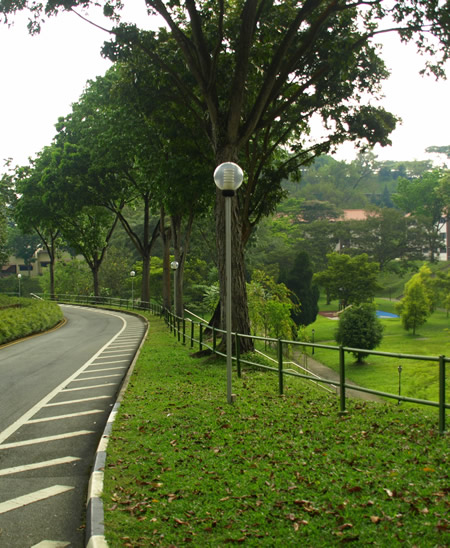
Photo: University Campus. Nanyang Technological University, Singapore. Image Credit: Alan C.
LONDON, March 16, 2017 — The Times Higher Education (THE) today announced its Asia University Rankings. Singapore’s National University of Singapore is first overall, closely followed by Nanyang Technological University in fourth place.
For the second year running, Singapore’s National University and China’s Peking University ranked first and second respectively.
Only two Japanese institutions appear in the top 20, despite the country’s strong representation in the rankings with 69 universities in the top 300.
After Mainland China with six universities in the top 20, Hong Kong and South Korea are well-represented with five institutions each.
Of the Southeast Asian region as a whole, Phil Baty, the editor of the Times Higher Education rankings, said:
“Singapore is the higher education star of the Southeast Asian region, with its national university topping the ranking for the second year in a row. Its younger sister Nanyang Technological University is not far behind in fourth place, but it drops two places this year despite an improved performance due to stiff competition from China.
“Thailand is also facing a tough contest, with all seven of its established universities dropping down the table, due to other institutions improving at a faster rate.
“But the expansion of the ranking to include 300 universities, up from 200 last year, provides good news elsewhere in the region. Malaysia, for instance, has nine representatives, up from four last year, with its flagship institution, the University of Malaya, debuting at 59th place. Indonesia has also doubled its representation to two. And the Philippines make the table for the first time, with the University of the Philippines joining the 201-250 cohort.
“Overall this ranking of Asia’s best 300 universities proves what a dynamic, diverse and competitive higher education region the continent is becoming - and the southeast Asian region is a key part of that development. It must make sure it doesn’t get left behind.”
On the South Asian region as a whole, Phil Baty continued: “India is the higher education star of the South Asian region, taking an impressive 33 places in the table this year - more than double its representation a year ago. This means that India is now the third most-represented nation in the table for the first time.”
He said that Pakistan has also made great gains, more than tripling its representation since last year, from two to seven, while Sri Lanka makes its debut with the University of Colombo making the 251+ band.
THE Asia University Rankings 2017 — Top 20
Rank — Institution — Country
THE Asia University Rankings 2017 — INDIA
Rank — Institution — No. of Full-time Students — Student.Staff Ratio — International Students — Female : Male Ratio
|GlobalGiants.Com|
Edited & Posted by the Editor | 1:09 AM | View the original post


Photo: University Students. Image Credit & Photographer: Francisco Osorio.
LONDON, February 15, 2017 — Montreal, Canada, has topped the QS Best Student Cities Rankings 2017.
Montreal’s success is the latest of a series of propitious signs for a city beginning to escape a period of economic stagnation, following positive growth forecasts for 2017, and the recent announcement of its selection as the ‘World’s Most Intelligent City’. Its first-place ranking is also the highlight of a series of positive performances from Canadian cities.
Paris drops to second place, receiving reduced rank for Affordability and Desirability.
While London rises from fifth place to third place suggesting that UK cities remain excellent study destinations in the face of Brexit, with rises in QS’s Affordability indicator a major contributor to all eight of its ranked cities improving their rank.
Affordability issues adversely affect American cities: though Boston places eighth, ten of its twelve ranked cities drop.
Australia’s high cost-of-living and tuition fees are proving disadvantageous: all of its seven ranked cities drop, with Sydney plummeting from fourth to thirteenth, and Melbourne falling from second to fifth.
Seoul is Asia’s best student city, rising to 4th, followed by Tokyo (7th) , Hong Kong (11th) and Singapore (14th).
Berlin rises to 6th; while Munich (9th) and Vancouver (10th) complete the top 10.
For the first time, two cities from India, Mumbai and New Delhi, get included in the World’s Best Student Cities.
This year’s ranking features a ‘Student View’ indicator for the first time.
Over 18,000 students responded to QS’s inaugural survey for this ranking, providing input about their own student experiences, and, for prospective students, the relative desirability of a city.
QS BEST STUDENT CITIES 2017
RANK — CITY — COUNTRY
QS Best Student Cities 2017… #Universities #Cities #HigherEd .. #Montreal #Paris #London #Boston #Mumbai .. https://t.co/WIcmrCKgqC
— GlobalGiants.Com (@GlobalGiants) March 6, 2017
|GlobalGiants.Com|
Edited & Posted by the Editor | 9:33 AM | View the original post

Photo: University Campus Building, ETH Zürich (Swiss Federal Institute of Technology, Zurich), Switzerland. Image Credit: Juhanson.
The institutions with the strongest global connections have a ‘cultural disposition’ to think beyond borders.
Times Higher Education (THE) has ranked the world’s “most international” universities.
The ranking is drawn largely from the “international outlook” pillar of the THE World University Rankings 2016-17, which covers international staff, students and co-authors. However, it also includes a measure of universities’ international reputations, taken from THE’s annual Academic Reputation Survey.
A striking feature of the upper reaches of the 150-institution table is the prominence of universities from relatively small, export-reliant countries, where English is an official language or is widely spoken.
The ranking is led by two Swiss universities: ETH Zurich - Swiss Federal Institute of Technology Zurich; and the Ecole Polytechnique Federale de Lausanne. Of all the countries in the ranking, the Swiss representatives also have the greatest average proportion of international staff and internationally co-authored publications: both 62 per cent.
• ETH Zurich (Swiss Federal Institute of Technology, Zurich) has more than 18,000 students from over 120 countries and is the top university in continental Europe. It boasts Albert Einstein as one of its most notable alumni.
Next in the ranking are the University of Hong Kong and the National University of Singapore. THE data scientist Billy Wong says that this may reflect the fact that nations such as Hong Kong, Singapore and Switzerland are all “big, global trading hubs”, conditioned to look beyond their borders for personnel and ideas.
Below the top four is a glut of institutions from the UK, Australia and Canada: prominent destinations for international students and scholars because of their prestigious universities and their use of English, the global lingua franca. The UK has 13 institutions in the 150, led by Imperial College London at number five. The University of Oxford, the University of Cambridge, University College London and the London School of Economics also make the top 10.
The US is less prominent in this ranking than it usually is in international league tables, possibly reflecting the fact that its size makes it less reliant on immigration to supply it with top student and academic talent. There is only one US institution in the top 30: the Massachusetts Institute of Technology, at number 22. Harvard University (sixth in the overall THE World University Rankings 2016‑17) is 33rd, Stanford (third) is 36th and the California Institute of Technology (second) is 52nd. However, US institutions are still the most numerous in the international ranking, accounting for 64 places.
THE’s Wong thinks that internationalisation activities can boost a university’s global reputation, which has a lot of knock-on impacts. “If they can have more international collaboration and become better known internationally, that can help them in areas such as student recruitment, academic recruitment, attracting international funding and so on,” he says.
Following is the Times Higher Education (THE) Ranking of the World’s “Most International” Universities 2017
Rank — Institution — Country — Overall Score
|GlobalGiants.Com|
Edited & Posted by the Editor | 2:50 AM | View the original post
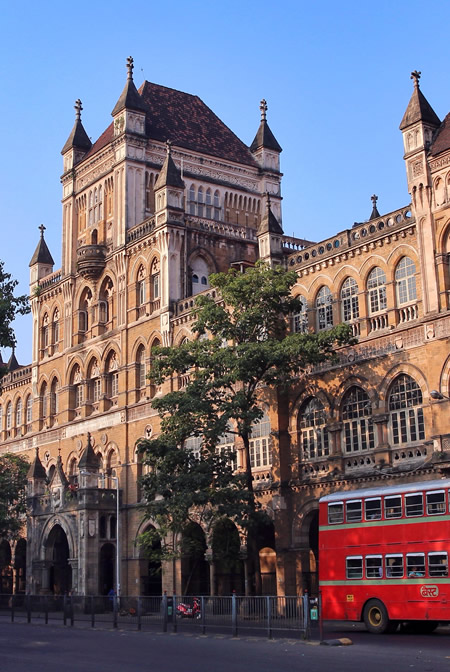
Photo: Elphinstone College, Mumbai. Established in 1856, Elphinstone College is one of the oldest colleges of the University of Mumbai. It is reputed for producing luminaries like Bal Gangadhar Tilak, Bhim Rao Ambedkar, Badruddin Tyabji, Pherozshah Mehta, Jamshedji Tata, and illustrious professors like Dadabhai Naoroji. Image Credit: Franx.
The University Grants Commission (UGC) of India has implemented a scheme of “Autonomous Colleges” with a view to bring in quality reforms in higher education. The Scheme of Autonomous Colleges offers academic and operative freedom to the Colleges. The autonomy so awarded under the scheme enables a College to determine and prescribe its own courses of study and syllabi and restructure and redesign the courses to suit local needs and to devise innovative methods of teaching, examination and evaluation.
The scheme of Autonomous Colleges is open for all Colleges. Any number of Colleges currently under a University can apply for award of “Autonomous Status” to UGC under this scheme.
This information was given by India’s Minister of State for Human Resource Development, Dr. Mahendra Nath Pandey, today.
• Meanwhile, India’s Prime Minister, Narendra Modi, has made an appeal to universities in the country to aspire to be among the top 100 globally. There is no Indian university among the world’s top 100 universities, Modi said, adding, we feel “ashamed”.
“I invite 10 public and 10 private universities to come forward and take a pledge to make a place for themselves in the top 100 universities of the world. “Those who will come forward will get special economic assistance. They will be given relaxation from seeking various approvals. There will be an open field for them,” he promised.
|GlobalGiants.Com|
Edited & Posted by the Editor | 3:26 PM | View the original post
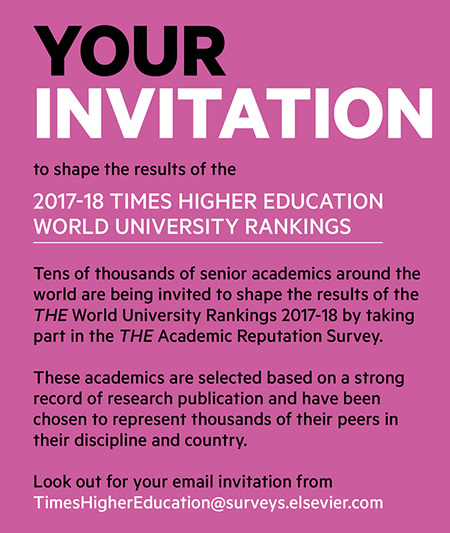
Leading academics from across the world are being invited to help Times Higher Education (THE) develop unique new insights into the global teaching and research landscape by highlighting the most prestigious institutions in their field.
THE has launched its 2017 Academic Reputation Survey, which asks published scholars to outline which universities they perceive to be the best for teaching and research in their specialist discipline.
Each respondent is asked to identify institutions worldwide and in their own country and will be representing many of their peers from their fields and their nation.
The survey results will make up two of the 13 performance indicators used to create the THE World University Rankings 2017-18, and related regional rankings, and will form the basis of the “THE World Reputation Rankings”.
The survey, run in partnership with Elsevier, is invitation-only to ensure a representative statistical sample. It is available in 15 languages, and to ensure a fair and balanced response, it is distributed using United Nations data on the geographical distribution of researchers globally. Universities cannot nominate respondents and individuals are not able to volunteer to take part.
|GlobalGiants.Com|
Edited & Posted by the Editor | 10:59 AM | View the original post
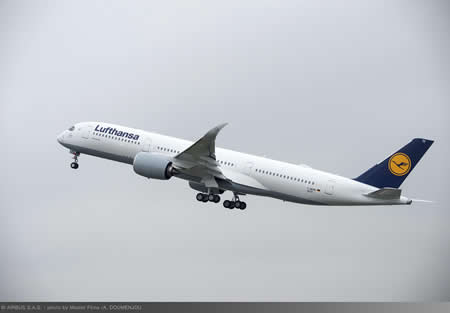
Photo: The first A350-900 for Lufthansa, which performed its maiden flight in November 2016, is part of a 25-aircraft order placed by the German flag carrier. Image provided by & copyright © AIRBUS.
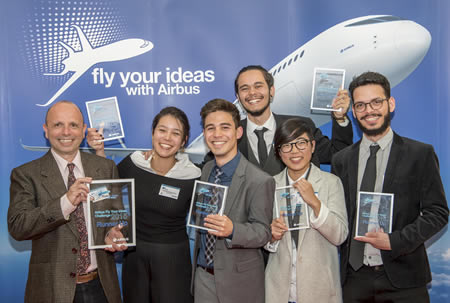
Photo: Team Retrolley from University of Sao Paulo, Brazil, Runners-up of Airbus Fly Your Ideas 2015. From left: Fausto Mascia, Academic mentor University of Sao Paulo, Denise Ikuno, Lucas Otsuka, Tadeu Omae, Maki Shintate, Lucas Neumann. Image provided by & copyright © AIRBUS.
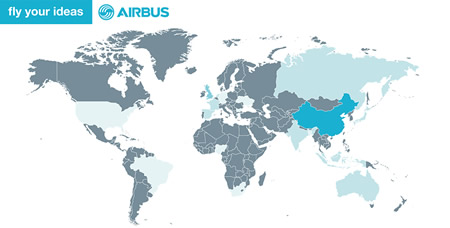
TOULOUSE, France, Dec. 20, 2016 — A record 5,499 students from around the world registered to participate in the fifth edition of Airbus’ Fly Your Ideas, the global student challenge organised in partnership with UNESCO.
A group of 60 Airbus experts and innovators assessed the ideas submitted by 356 teams from 89 countries. The rigorous evaluation process took place at four different Airbus locations in France, Germany, Spain and the UK, with 50 student teams selected to reach Round Two of the competition, starting in January 2017.
The competition is led by teams registered in the Asia-Pacific region. The 50 teams comprise 202 students representing 38 different nationalities. With 52% of teams mixing male and female students, two thirds of all teams are diverse in some way, for example with members coming from different countries or studying different subjects.
Innovative ideas from the 50 chosen teams include robotic luggage trolleys, passenger seats which can be boarded outside the aircraft, new solutions for energy harvesting and virtual reality applications.
“Fly Your Ideas is unique and we are proud of the company-wide engagement of Airbus employees who support the competition, either as assessors, mentors or experts”, says Charles Champion, Airbus Executive Vice President Engineering. “We are offering students the rare opportunity to interact directly with senior specialists from across the business. In turn, these experts will benefit from their direct interaction with talents from across the globe, all sharing the same passion for one of the world’s most exciting industries.”
Each of the teams has 100 days to refine and develop their ideas. The top five teams to make it through to Round Three will spend a week at the “ProtoSpace” based at the Airbus HQ in Toulouse to prototype, test and visualise their ideas using state-of-the art equipment with personalised guidance from Airbus. The winning team will receive a €30,000 prize and the runner up team will receive €15,000 at a live prize giving event in May 2017.
Key figures Fly Your Ideas 2017:
• Number of ideas submitted: 356
• Number of ideas chosen: 50
|GlobalGiants.Com|
#Airbus and #UNESCO: The Fly Your Ideas Partnership. #HigherEd #Universities @Airbus @UNESCO https://t.co/jRaoi9awqu
— GlobalGiants.Com (@GlobalGiants) December 23, 2016
Watch as the #A350-1000 performs its maiden flight - Thanks to all who joined us yesterday for this industry milestone! #A350FF pic.twitter.com/nQZrxqRT6l
— Airbus (@Airbus) November 25, 2016
Edited & Posted by the Editor | 4:33 AM | View the original post
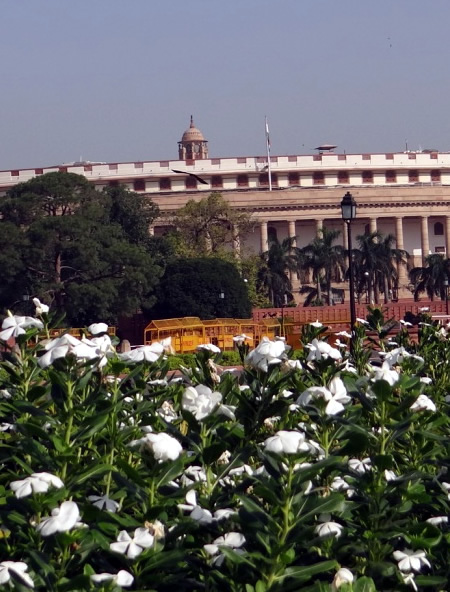
Photo: A Section of Parliament House, New Delhi. Image Credit: Ankur Gallery.
New Delhi, India - December 15, 2016 — India Minister of State for Human Resource Development, Dr. Mahendra Nath Pandey, today, in separate written statements, gave the following information to Rajya Sabha (upper house) about universities in the country.
• “As per All India Survey on Higher Education 2015-16, the number of universities in the country is 799, and out of them 386 Universities came into existence since 2001. The number of students and teachers in the institutions of higher education in the country during academic year 2015-16 are 3.46 Crore (one crore= ten million) and 15.19 Lakh (one lakh= one hundred thousand) respectively.”
• “The University Grants Commission (UGC),” the Minister explained, “is responsible for promotion and co-ordination of University Education, determination and maintenance of standards of teaching, examination, and research in Universities. To ensure adequate quality teaching faculties in Universities/Colleges, the UGC has notified rules and procedures containing Academic Performance Indicators (APIs). API scores are mandatory qualifying benchmarks for Career Advancement Scheme and for direct recruitment of teachers and other academic staff in Universities and Colleges.”
• The Minister gave the following information on Central Universities.
“Central Universities,” the Minister stated “are statutory autonomous bodies which are established under their respective Acts of Parliament. Subordinate legislation in respect of Central Universities includes Statutes, Ordinances and Regulations framed under the respective Acts by the Universities from time to time.”
“Along with the Act, the First Statutes of the Central Universities are passed by the Parliament. The Central Universities can amend, add or repeal any Statute with the approval of the Visitor. Ordinances and Regulations are also made by the Universities which should be consistent with the Act and Statutes of the university concerned,” the Minister explained.
The Minister said that at present there are 41 Central Universities in the country.
“In a meeting held with the Vice Chancellors of Central Universities,” the Minister elaborated, “the issues relating to improvement of quality of education, promoting research and innovation, faculty development, collaboration with the industry and research laboratories, effective use of technology in teaching learning process, and mandatory accreditation were discussed at length.”
The Minister elucidated that the University Grants Commission (UGC) has introduced the following schemes/regulations/guidelines/programmes for the improvement of quality and standards in the Central Universities:
• Cashless Society - Digital Financial Literacy Campaign
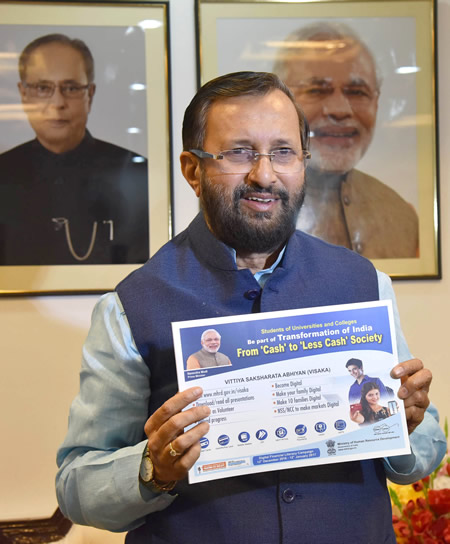
Photo: The Union Minister for Human Resource Development of India, Mr. Prakash Javadekar, launching the Digital Financial Literacy Campaign, called Vittiya Saksharta Abhiyan - VISAKA, at a press conference, in New Delhi, on December 15, 2016. Image provided by the Press Information Bureau, Government of India.
Meanwhile, the Union Minister for Human Resource Development of India, Mr. Prakash Javadekar, today launched Digital Financial Literacy Campaign at a Press Conference in New Delhi. Mr. Javadekar said that about 25,00,000 students of higher educational institutions are expected to volunteer to be associated with the campaign.
Mentioning this campaign as biggest digital transformation of country after Independence, Minister said that Government officers, Bankers and administrators will be roped in to impart training to students. Students, in turn, will educate their family members and other families in their neighbourhood, motivating them to go in for digital payment.
|GlobalGiants.Com|
Students of Univs & Colleges be part of #TransformingIndia from 'Cash' to 'Less Cash'.Visit https://t.co/R0j8Pz5Grb to enroll as volunteers. pic.twitter.com/UVSS1oqUHa
— Prakash Javadekar (@PrakashJavdekar) December 15, 2016
@PrakashJavdekar @PIB_India @PMOIndia @HRDMinistry
— GlobalGiants.Com (@GlobalGiants) December 17, 2016
Thank you for your Tweet, Sir. Find it embedded here: https://t.co/nh7iPn48zg
Edited & Posted by the Editor | 7:52 AM | View the original post
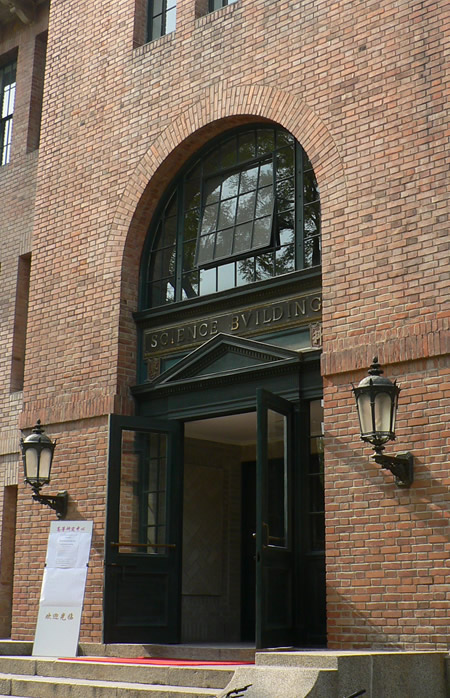
Photo: Entrance to the Science Building, Tsinghua University, Beijing, China. Image Credit: Milan Tvrdy.
London — India has increased its share of the top universities in the Times Higher Education BRICS & Emerging Economies University Rankings 2017, but China still has the highest density of leading institutions in the developing world.
The Indian Institute of Science, Bangalore, breaks into the top 15 for the first time this year, in 14th place, thanks to an improved teaching environment and greater research influence.
Panjab University, Chandigarh, which had topped in India at No. 13 in 2014, and had later slipped to No. 39 in 2015 and to No. 121 in 2016, has, however, further slipped and is now placed at No. 135.
Meanwhile, Indian Institute of Technology Bombay has reached its highest position after climbing three places to 26th, boosted by improved scores across all the five pillars underlying the methodology.
Overall, the country has 27 universities in the top 300 ranking, 19 of which make the top 200 (up from 16 last year), making it the second most-represented nation in the table.
Anurag Kumar, director of the Indian Institute of Science, said that increased government science funding in recent years has enabled the university to enhance grants for new hires, invest in state-of-the-art infrastructure and encourage interdisciplinary research. The institution is working hard to attract more scientists from other countries, he added.
“This growing talent pool augurs well for the country,” he said. “The government is doing its part by enhancing its education and research budget across the board.”
However, Richard Everitt, director of education at British Council India, warns that “reform is slow in India”, and although the country has one of the biggest higher education systems in the world and “some good institutions”, it still “doesn’t perform well on a global platform”.
Despite India’s gains, however, China still dominates the list, taking 52 - or more than one in six - places in the top 300. Six of these make the elite top 10, including Fudan University, which rose 11 places to reach sixth place this year, and Peking and Tsinghua universities, which hold on to the top two spots for the fourth year running.
While the two Asian giants have improved their showing, the performance of the other BRICS nations is waning, largely because of increased competition as a result of expanding the list to rank 300 universities from 41 countries, up from 200 institutions in 35 nations last year.
Brazil no longer has a university in the top 10, as the University of Sao Paulo slips four places to 13th, its lowest ever position, while half of South Africa’s eight universities have fallen.
Russia’s performance is more mixed; while 10 of its 24 universities have dropped places, Lomonosov Moscow State University holds on to third place amid increasing competition from China, and the Moscow Institute of Physics and Technology climbs 81 places to 12th, thanks to an improved performance across teaching, research, knowledge transfer and international outlook.
The THE BRICS & Emerging Economies University Rankings use the same 13 performance indicators as the flagship World University Rankings but are re-calibrated to reflect the development priorities of universities in emerging economies.
BRICS & Emerging Economies University Rankings 2017
TOP 10
BRICS & Emerging Economies University Rankings 2017
INDIA
BRICS RANK — UNIVERSITY
|GlobalGiants.Com|
BRICS & Emerging Economies Rankings 2017: should emerging economies nurture world-class universities? https://t.co/4AsD9wigQQ #thebrics
— TimesHigherEducation (@timeshighered) December 1, 2016
Universities from 41 countries make our fourth annual #THEBRICS ranking. 2017 results out in just TWO HOURS! (30 Nov, 9pm GMT) pic.twitter.com/I7wmY3ftKA
— World Uni Rankings (@THEworldunirank) November 30, 2016
Edited & Posted by the Editor | 12:38 PM | View the original post

Photo: UN Secretary-General Ban Ki-moon delivers a keynote address on “The Future of Multilateral Disarmament” at an event hosted by the Centre for Global Affairs (CGA) of New York University (NYU). The UN Secretary-General also took part in a Q&A session moderated by Edith Lederer, chief UN correspondent for the Associated Press. 22 November 2016. New York, United States. UN Photo/Rick Bajornas.
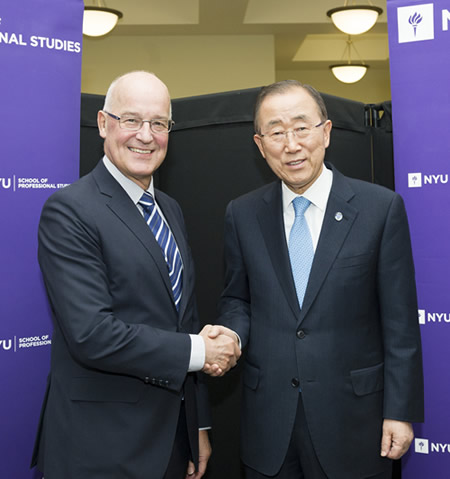
Photo: UN Secretary-General Ban Ki-moon delivered a keynote address on “The Future of Multilateral Disarmament” at an event hosted by the Centre for Global Affairs (CGA) of New York University (NYU). The UN Secretary-General (right) with NYU President Andrew Hamilton on the occasion. 22 November 2016. UN Photo/Rick Bajornas.
|GlobalGiants.Com|

“There is one thing stronger than all the armies in the world, and that is an idea whose time as come.”
— Victor Hugo.

“Victory belongs to the most persevering.”
— Napoleon Bonaparte.

“If they want peace, nations should avoid the pin-pricks that precede cannon shots.”
— Napoleon Bonaparte.
Edited & Posted by the Editor | 3:17 PM | View the original post

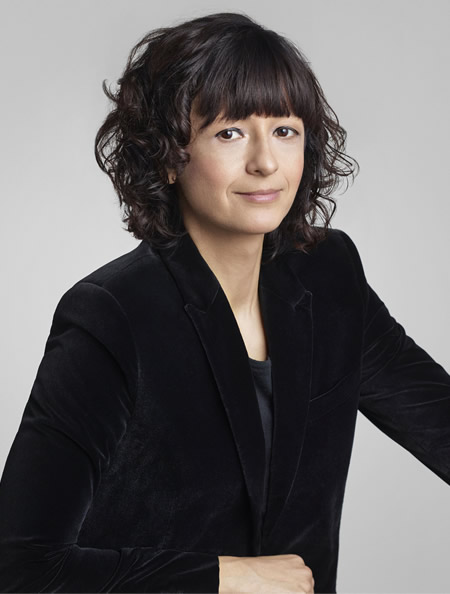
Photo: Prof. Emmanuelle Charpentier, 2016 Laureate, L’Oréal-UNESCO For Women in Science. Image Credit: Thierry Bouët for L’Oréal Foundation. Image provided by & Copyright © L’Oréal-UNESCO For Women in Science.

Photo: A trainee at the 2016 L’Oréal-UNESCO For Women in Science Rising Talents Training Session, Paris. Image Credit: Stéphane Cardinale for L’Oréal Foundation. Image provided by & Copyright © L’Oréal-UNESCO For Women in Science.
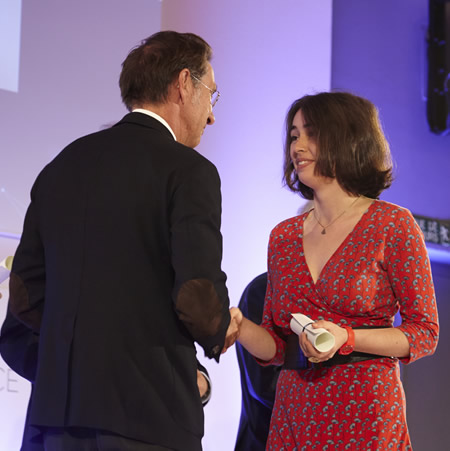
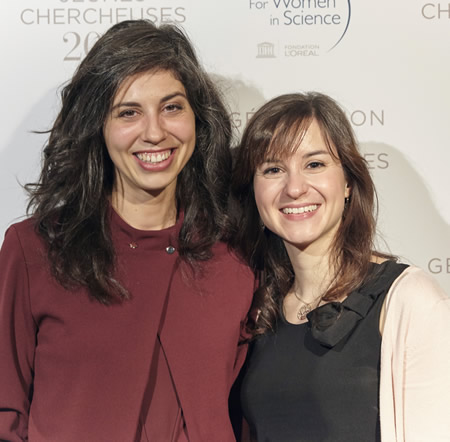
Photos: France L’Oréal-UNESCO 2016 Awards Ceremony. Images provided by & Copyright © Fondation L’Oréal.
The L’Oréal Foundation and UNESCO today announced the laureates of the 2017 L’Oréal-UNESCO For Women in Science Awards in the physical sciences. They will receive their awards at a ceremony in Paris on 23 March 2017.
Proposed by an international community of more than 2,000 leading scientists, the five laureates were selected by an independent international jury of 12 renowned scientists presided this year by Professor Christian Amatore, of the French Académie des sciences.
Each laureate will receive a prize of €100,000 as reward for her contribution to science.
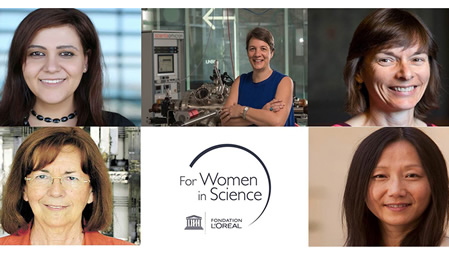
Laureates are as under:
CONTINENT
Name of the Laureate
Nationality
Designation
Field
• AFRICA AND THE ARAB STATES
Professor Niveen KHASHAB
Lebanese
Associate Professor of Chemical Sciences and Engineering, King Abdullah University of Science and Technology (KAUST), SAUDI ARABIA
Analytical Chemistry
“For her contributions to innovative smart hybrid materials aimed at drug delivery and for developing new techniques to monitor intracellular antioxidant activity.”
• ASIA PACIFIC
Professor Michelle SIMMONS
Australian
Professor, Centre of Excellence for Quantum Computation and Communication Technology - University of New South Wales, AUSTRALIA
Quantum Physics
“For her pioneering contributions to quantum and atomic electronics, constructing atomic transistors en route to quantum computers.”
• EUROPE
Professor Nicola SPALDIN
British
Professor and Chair of Materials Theory, ETH Zürich, SWITZERLAND
Solid State Physics
“For her groundbreaking multidisciplinary work predicting, describing and creating new materials that have switchable magnetic and ferroelectric properties.”
• NORTH AMERICA
Professor Zhenan BAO
USA
Professor, Department of Chemical Engineering, Stanford University, USA
Material Chemistry
“For her outstanding contribution to and mastery of the development of novel functional polymers for consumer electronics, energy storage and biomedical applications.”
• LATIN AMERICA
Professor Maria Teresa RUIZ
Chilean
Professor, Department of Astronomy, Dept. / Universidad de Chile, CHILE
Astrophysics
“For her discovery of the first brown dwarf and her seminal work on understanding the faintest stars, including stars at the final stages of their evolution (white dwarfs).”
Through its “For Women in Science” programme, a worldwide partnership with UNESCO, the L’Oréal Foundation motivates girls in High School to pursue scientific careers, supports women researchers and rewards excellence in a field where women remain underrepresented.
|GlobalGiants.Com|
Edited & Posted by the Editor | 2:09 PM | View the original post

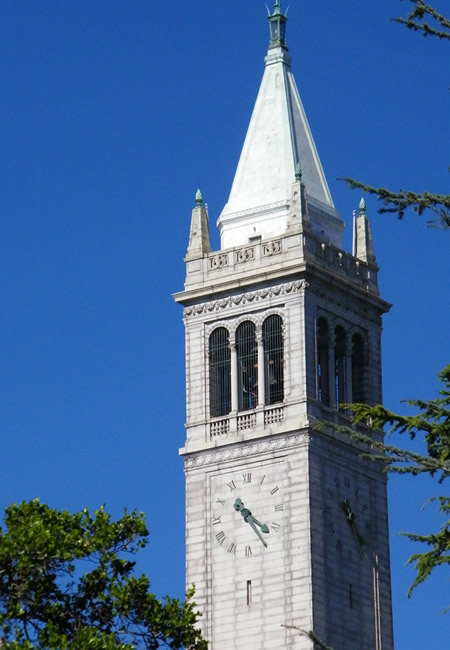
Photo: Sather Tower, University of California, Berkeley. Image Credit & Copyright © Corey Seeman.
U.S. News & World Report has announced the 2017 Best U.S. Colleges rankings to help students worldwide compare the academic quality of more than 1,800 U.S.-based schools. Princeton University remains No. 1 in the Best National Universities category. For the 14th consecutive year, Williams College takes the top spot on the Best National Liberal Arts Colleges list.
California schools make a strong showing in the Top Public Schools list. The University of California—Berkeley is the No. 1 Top Public School among National Universities for the 19th year.
Military academies lead the Top Public Schools among National Liberal Arts Colleges. The United States Naval Academy is the No. 1 Top Public School among National Liberal Arts Colleges.
The U.S. News rankings focus on academic excellence, with schools ranked on up to 15 measures of academic quality. Overall, the rankings emphasize student outcomes - including graduation and retention rates - which carry the most weight at 30 percent.
In the detailed report, school profiles include specifics on academic life, financial aid, student body makeup and more. Students can research schools with the most Economic Diversity and Campus Ethnic Diversity, as well as the Most International Students.
“Research has shown that smaller classes foster a productive and positive learning environment,” said Robert Morse, chief data strategist at U.S. News. “With this new index measure, U.S. News takes fuller advantage of the data schools provide and rewards schools that make an effort to better serve their students with smaller classes.”
The college ranking categories in the report are based on the Carnegie Classification of Institutions of Higher Education, the most widely accepted classification system in U.S. higher education.
2017 U.S. News Best Colleges Rankings
National Universities - Top 10
National Liberal Arts Colleges - Top 10
Top Public Schools
National Universities - Top 5
National Liberal Arts Colleges - Top 5
|GlobalGiants.Com|
Edited & Posted by the Editor | 6:56 AM | View the original post
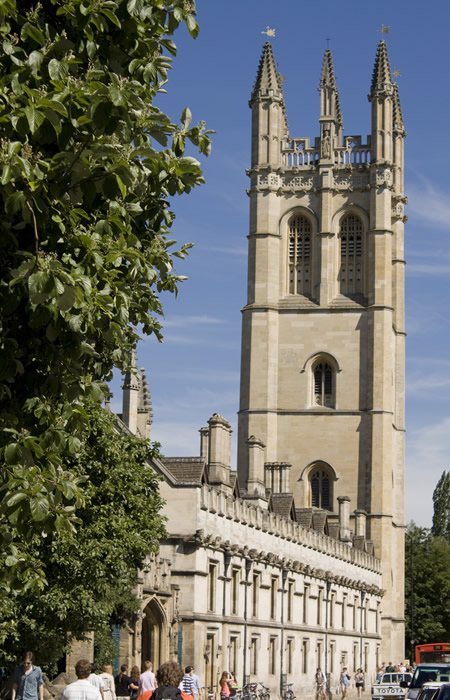
Photo: Magdalen Tower, Magdalen College, University of Oxford. Image Credit & Copyright © Lawrence O.P.
London, September 21, 2016 — The University of Oxford has become the first UK university to top the Times Higher Education World University Rankings in the 12-year history of the table. It knocks the five-time leader, the California Institute of Technology, into second place in the World University Rankings 2016-2017.
Oxford’s success can be attributed to improved performances across the four main indicators underlying the methodology of the ranking - teaching, research, citations and international outlook. More specifically the institution’s total income and research income is rising faster than its staff numbers, its research is more influential, and it has been more successful at drawing in international talent.
Two new Asian universities, Chinese University of Hong Kong, and Korea Advanced Institute of Science and Technology, make the top 100. While another four, City University of Hong Kong, University of Science and Technology of China, Fudan University, and Hong Kong Polytechnic University, join the top 200.
Furthermore, China’s two flagship universities have both made gains - Peking University joins the top 30 at 29th (up from 42nd last year), while Tsinghua University joins the top 40 at 35th (up from joint 47th). Asia’s leading institution, the National University of Singapore, is at 24th - its highest ever rank.
Meanwhile, India’s leading university - the Indian Institute of Science - is edging closer to the top 200, claiming a spot in the 201-250 band, its highest ever position.
289 Asian universities from 24 countries make the list of 980 institutions and an elite group of 19 are in the top 200, up from 15 last year.
Richard Robison, emeritus professor in the Asia Research Centre at Murdoch University, said while there are a “small number” of Asian universities “making international strides”, many are much further behind.
He said that Asian universities create a “very pressured environment”, have “a lot of learning by rote” and there is “not a lot of discussion in classes”.
THE World University Rankings 2016-2017: Top 10
2016-17 Rank — Institution — Country
INSTITUTIONS FROM INDIA
2016-17 Rank — Institution
|GlobalGiants.Com|
980 universities from 79 countries make our 13th world #THEunirankings. Results out 21 Sep, 9pm (BST) https://t.co/QzTap86FGS pic.twitter.com/tT4KfXX1Lr
— World Uni Rankings (@THEworldunirank) September 21, 2016
Edited & Posted by the Editor | 4:40 AM | View the original post

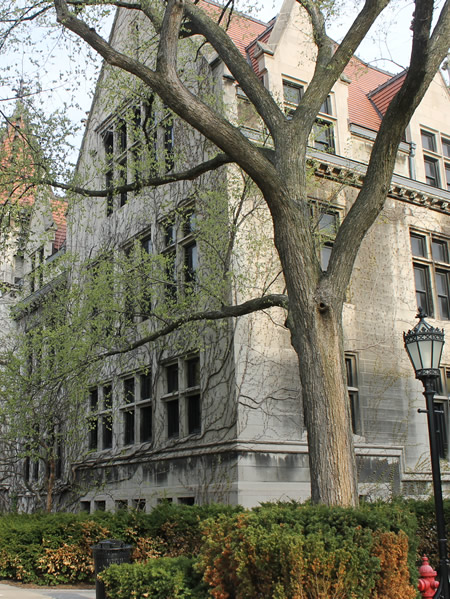
Photo: The University of Chicago Campus, Chicago, Illinois, USA. Image Credit & Copyright © Corey Seeman.

Photo: A building at the university campus. ETH Zurich - Swiss Federal Institute of Technology. Image Credit & Copyright © Juhanson.
• The thirteenth edition of the QS (Quacquarelli Symonds) World University Rankings, announced today, indicates that investment in higher education - either public or private - is a key differentiating factor between this year’s risers (South Korea, Russia, the US, and China) and fallers (Most of Western and Southern Europe, South Africa, and Latin America).
TOP 20 UNIVERSITIES 2016/2017

QS World University Rankings 2016/17 — INDIA
QS RANK — INSTITUTION
74,651 academics and 37,781 employers contributed to the rankings through the QS global surveys, the largest of their kind. QS analyzed 10.3 million research papers and 66.3 million citations, indexed by Elsevier’s Scopus database.
• Ben Sowter, Head of Research, QS, said: “Institutions in countries providing high levels of targeted funding, whether from endowments or the public purse, rise. Conversely, Western European nations making or proposing cuts to public research spending lose ground to their US and Asian counterparts.”
The rankings include 916 universities from 81 countries. Thirty-three countries feature in the Top 200. The US dominates, with 48 institutions, ahead of the UK (30), Netherlands (12), Germany (11), Canada, Australia (9), Japan (8), China (7), France, Sweden and Hong Kong (5).
|GlobalGiants.Com|
How Do University Rankings Help Students? #QS World #University #Rankings. @TopUnis #highered, #internationalization https://t.co/Rj4ygRDIUy
— Global Giants (@GlobalGiants) September 4, 2016
Top 10 Universities in the World 2016/17 #QS World #University #Rankings @TopUnis #highered #internationalization https://t.co/IcukxSW9nV
— Global Giants (@GlobalGiants) September 6, 2016
Top 10 Universities in India 2016/17 #QS World #University #Rankings. @TopUnis #highered #internationalization https://t.co/qdQ6dclm0j
— Global Giants (@GlobalGiants) September 6, 2016
@GlobalGiants Don't miss the new #QSWUR 2016/17, out on September 6th: https://t.co/jjvI6fqI6s
— Top Universities (@TopUnis) September 4, 2016
Thanks @TopUnis. Check our post here: https://t.co/jmIiHmKAb8 QS World University Rankings 2016/2017 #QSWUR
— Global Giants (@GlobalGiants) September 6, 2016
@GlobalGiants Congratulations! #QSWUR
— Top Universities (@TopUnis) September 6, 2016
Edited & Posted by the Editor | 5:36 AM | View the original post
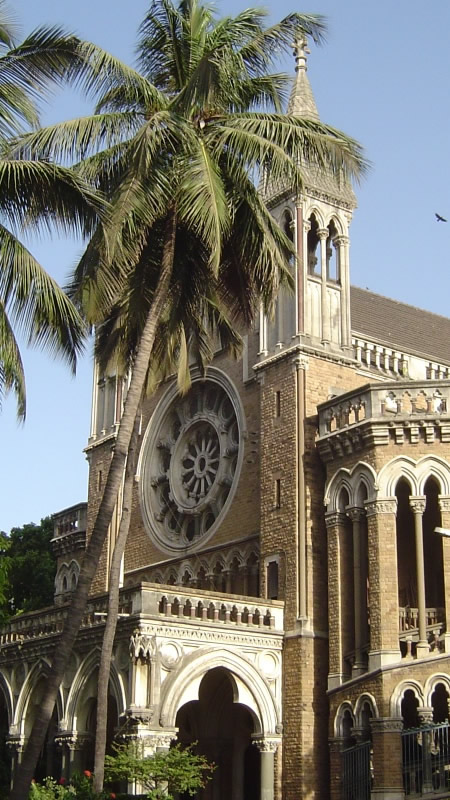
Photo: University of Mumbai, India. Image Credit: Steve.
The National Assessment and Accreditation Council (NAAC) of India has informed that it has reviewed and revised its grading system from a four grade system to a seven grade system. More number of letter grades within the same CGPA (Cumulative Grade Point Average) range will lead to further differentiation in quality of accredited institutions. The details of the revised grading system, being implemented from 1st July, 2016 onwards, are as follows:
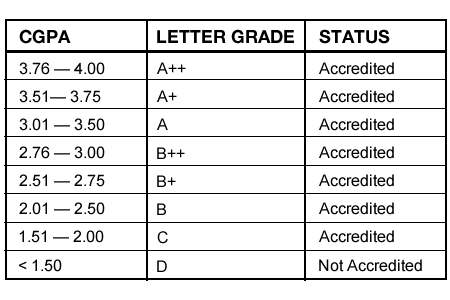
The NAAC has further informed that the present system of descriptors for letter grades, i.e., Very Good, Good, Satisfactory, Unsatisfactory, has been discontinued in the revised grading system.
This information was given by the Union Human Resource Development Minister, Mr. Prakash Javadekar, in parliament.
The National Assessment and Accreditation Council (NAAC) is an organisation that assesses and accredits institutions of higher education (universities and colleges) in India. It is an autonomous body funded by the University Grants Commission of Government of India and is headquartered in Bangalore.
According to NAAC, “Assessment and Accreditation is broadly used for understanding the “Quality Status” of an institution. In the context of Higher Education, the accreditation status indicates that the particular Higher Educational Institutions (HEI) - a College, a University, or any other recognised Unit therein, meets the standards of quality as set by the Accreditation Agency, in terms of its performance, related to the educational processes and outcomes, covering the curriculum, teaching-learning, evaluation, faculty, research, infrastructure, learning resources, organisation, governance, financial well being and student services.”
|GlobalGiants.Com|
Edited & Posted by the Editor | 7:40 AM | View the original post

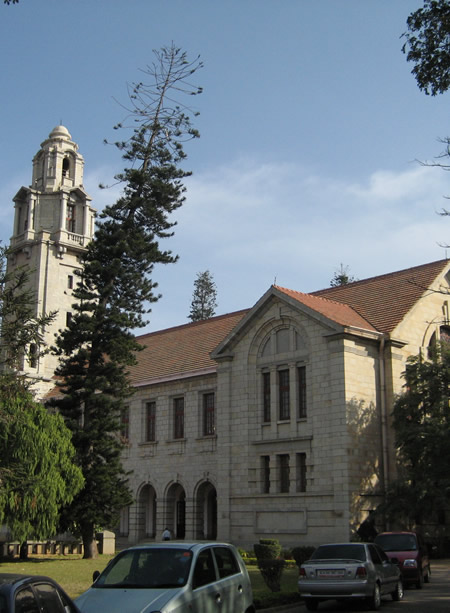
Photo: Indian Institute of Science, Bangalore, India. Original building, built 1937. Image Credit & Copyright © Bill/USAFA87.
London, July 20, 2016 — Released today, the QS University Rankings: BRICS 2016 see Chinese universities confirm their dominance of the tables. Led by Tsinghua University (1st) and Peking University (2nd), China now occupies the top five spots in the ranking, and accounts for almost half (23) of the top 50.
Published annually, the QS University Rankings: BRICS compares leading universities in the five BRICS countries - Brazil, Russia, India, China and South Africa. Collectively accounting for 42% of the world’s population, these five nations remain significant players in the changing global economy, and all have placed higher education at the center of plans for continued development.
For 2016, the ranking has been extended to feature the top 250 BRICS universities (previously 200). This expansion particularly benefits Brazil and India, which now have 54 and 44 entries respectively (compared to 40 and 31 last year). Nonetheless, China remains the most-represented nation, appearing 86 times, followed by Russia (55). South Africa has 11 universities featured, led by the University of Cape Town in 14th place.
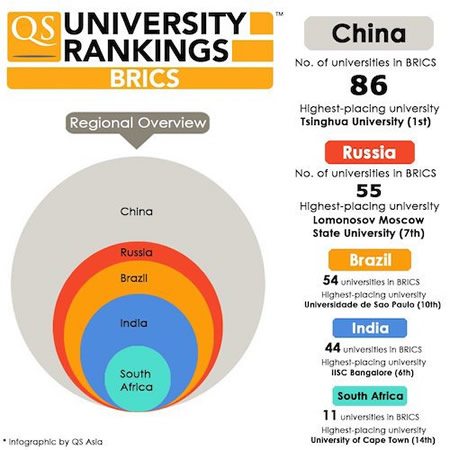
Top 10 Universities in the BRICS Countries - Overall
(Based on the QS University Rankings: BRICS 2016)
Rank — Institution — Country
The academic reputation indicator, based on a global survey of academics, awards full marks to four of the leading Chinese universities, as well as Russia’s Lomonosov Moscow State University and Brazil’s Universidade de Sao Paulo. All of these except the Russian institution also claim full marks in the employer reputation indicator, joined by the Indian Institute of Technology Bombay.
INSTITUTIONS FROM INDIA
BRICS RANK — UNIVERSITY
QS University Rankings: BRICS Top 10 Universities in India 2016 https://t.co/EPjnAWOeAS
— Global Giants (@GlobalGiants) July 20, 2016
|GlobalGiants.Com|
Edited & Posted by the Editor | 9:48 AM | View the original post

Public Universities play a key role in the transformation of the societies they represent and serve.
Thanks to Information Technology, Higher Education is fast becoming internationalized in all disciplines, and Public Universities, all over the world, have started to recognize this fact.
• “Think Globally, Act Locally” is now the norm here as well. Today, a public university with a penchant for seeking flattery from the locals, would find itself sailed into choppy waters.

Photo: Library of Congress, Washington, DC. Library of Congress houses the United States Copyright Office. Image Credit: Adam Fagen.
Our following succinct observation reflects the enhanced role of a public university in contemporary academic environment. This observation has been determined to be copyrightable and has been registered and made a part of its records by the United States Copyright Office, Library of Congress, Washington, DC.
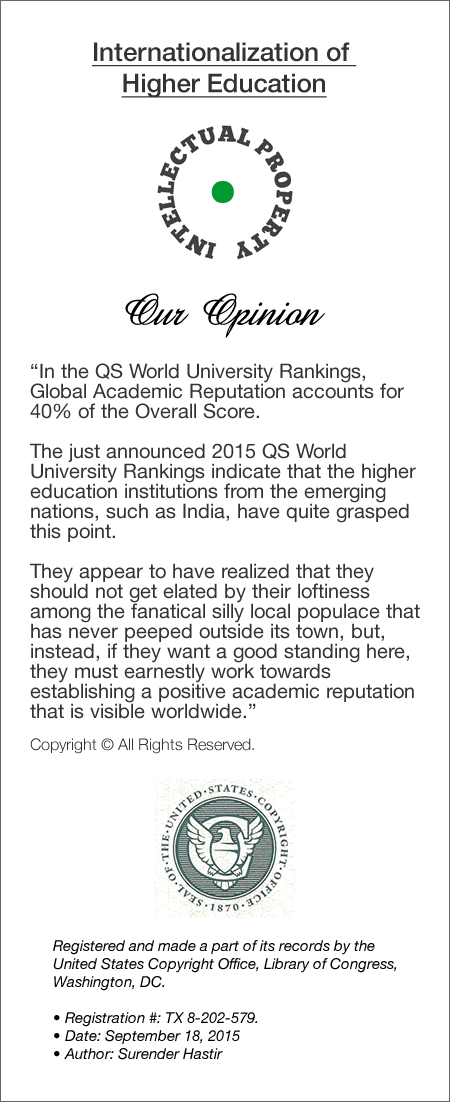

|GlobalGiants.Com|
Edited & Posted by the Editor | 12:36 PM | View the original post

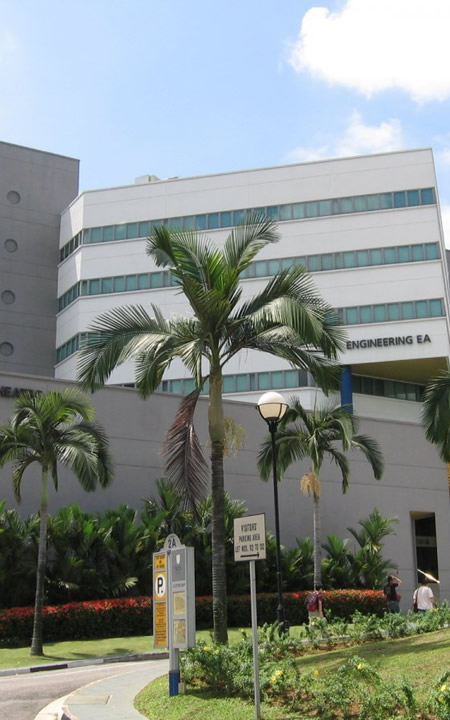
Photo: A building at National University of Singapore (NUS). National University of Singapore (NUS) has been declared Asia’s Finest University in 2016 by QS. Image Credit: oncampus.ru.
LONDON — Quacquarelli Symonds (QS), global higher education analysts, today released the QS University Ranking: Asia 2016.
National University of Singapore (NUS) is established as Asia’s finest university for the third consecutive year. It is followed by the University of Hong Kong. Nanyang Technological University rises one place to the podium, taking the bronze medal. While, in overall performance, China remains the preeminent nation, ahead of Japan.
Commenting on this QS Ranking, National University of Singapore (NUS) President Tan Chorh Chuan said: “Our priority is preparing future-ready graduates and developing top talent, driving innovation and forging strategic collaborations with academic and industry partners, and delivering impact from world-class research. I am heartened that our work is also reflected by NUS continued progress in the rankings.”
In this year’s QS Asia University Ranking:
QS University Rankings 2016 (Asia): Top 20
2016 Rank — Institution — Country/Territory
QS University Rankings 2016 (Asia): India
2016 Rank — Institution
QS University Rankings 2016 (Asia): Pakistan
2016 Rank — Institution
QS University Rankings 2016 (Asia): Bangladesh
2016 Rank — Institution
|GlobalGiants.Com|
Edited & Posted by the Editor | 4:43 AM | View the original post
 |
 |
